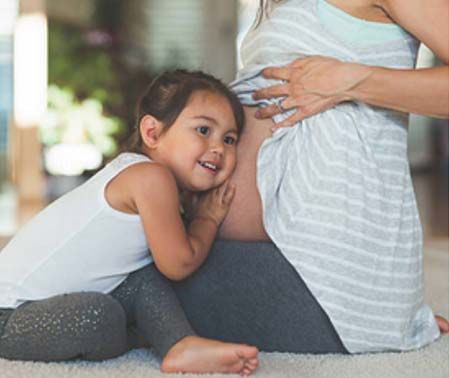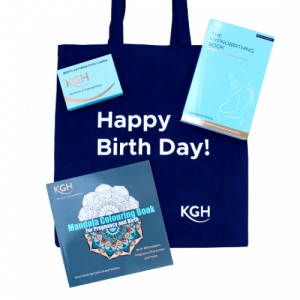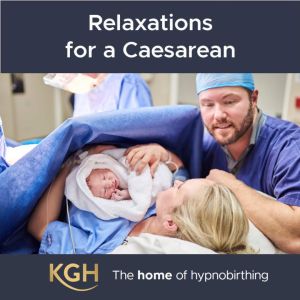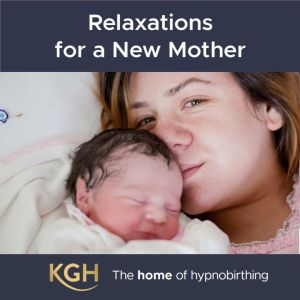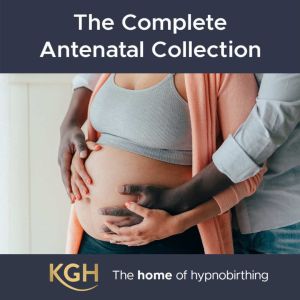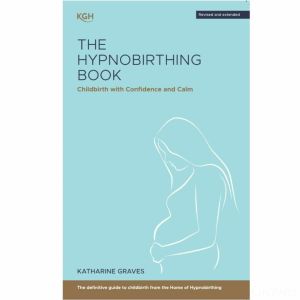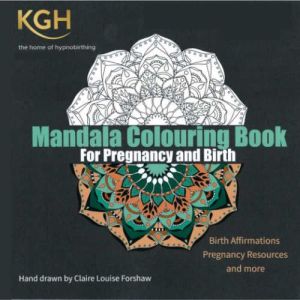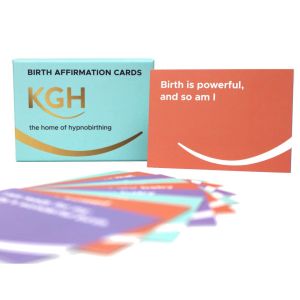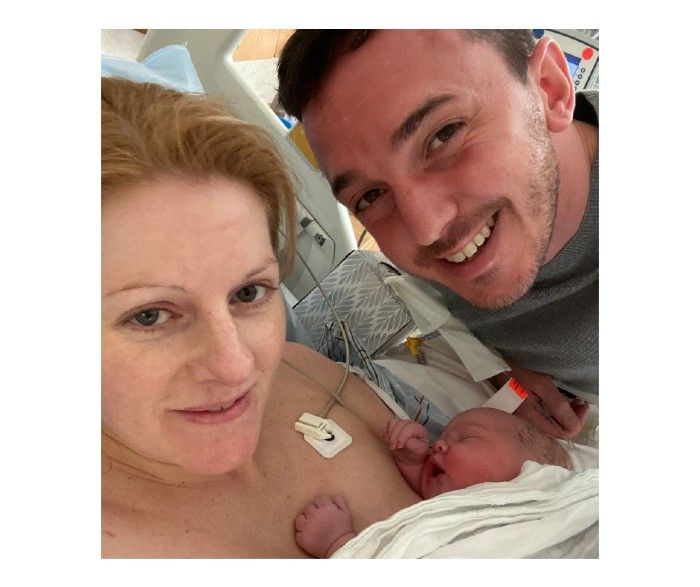
As I sit here breastfeeding this morning on World Hypnobirthing Day, I want to share our story with you. I was very lucky and had the most wonderful pregnancy; no sickness, I felt fit and well throughout and I managed to continue exercising and stayed healthy and active. It was, however, a stressful time during my pregnancy as we fell pregnant more quickly than we thought. It therefore coincided with; planning a wedding, getting married, and moving across the world to America – we don’t do things by halves! From the moment we conceived, I knew that I wanted to do hypnobirthing and thought I would be a perfect candidate. Being a teacher and having worked in early years education for many years, I had a positive mindset, and really believed that labour could be an empowering experience.
This all changed though when we moved to America, as I was worried with the differences between antenatal care in the US and the UK. I initially wanted a home water birth, however, after going from a low-risk midwifery led care pregnancy in the UK to having obstetric led care in the US (this is routine in the US), and after explaining my birth plan to an obstetrician, they sadly put me off the idea! This is because midwifery in the US is not regulated in the same way as it is in the UK, so midwives are not necessarily certified nurses. This is why it was so important to me that I took the full online KGH antenatal course, as it really changed the way I thought about pregnancy and birth and helped me to bring back that positive mindset. The course helped me to feel that I could make informed choices about the birth that I wanted, and I did extensive reading and research so I was equipped with information and knew what other options were available, not just taking what the obstetricians said as gospel. As such, after being put off the idea of a homebirth in the US, and already knowing that water birth laws vary state-to-state, and that some hospitals don’t have this option at all, I was pleased to find out that our local hospital had one birthing ‘tub’ available. I knew that I could labour in the water but needed to get out to give birth, so I settled on the idea of wanting a natural, no intervention, unmedicated birth, which it turns out is also not as common in the US as it is in the UK.
All of my antenatal appointments were going well; I measured exactly as I should, and we were told the baby (who we had named ‘buzz’ whilst not knowing the gender) was growing well and in the correct position. This was up until my 36-week appointment when I was tested for Group B Strep (GBS), which is routine in the US but isn’t in the UK. I was devastated to find that this came back positive, and when the obstetrician gave me this news, they told me this would mean that I needed to have intravenous (IV) antibiotics during labour. I then, of course, began to do even more reading and research about GBS and was surprised to find how common it is. I don’t think enough people talk openly about this! I read a lot about the risks and side effects of antibiotics to a new-born baby and was pleased that again there were other options available, not just what the obstetrician had said. After my additional research (including reading a fantastic book that Katharine recommended), I felt equipped to make an informed decision for what we felt was right for us, and the obstetrician was surprised when we told them that I would be declining the IV.
The next 4 weeks were filled with even more hypnobirthing practice and I tried to focus on having the positive birth experience I so wanted. I had positive affirmations up all around the house that I read daily, I listened to the visualisations every night, and had packed the hospital bag full of things to create a calm and relaxed environment. I even had the KGH sign printed and ready to put up on the hospital door!
Again, during the rest of my antenatal appointments, we were told everything looked great, the baby was in the correct position so it was just a case of waiting for them to make their arrival into the world. When my due date came and went and there was still no sign of baby, my obstetrician was again surprised that I declined an induction of labour. I really didn’t want to be induced and wanted to wait it out – the Estimated Due-Date (EDD) is after all, only a guess based upon individual menstrual cycle.
My waters finally broke at 2am Friday morning (10 days past our EDD), but I didn’t feel like I had any contractions and thought I had reduced foetal movement compared to what I normally experienced. James, my husband, called the obstetrician and they said to go into the hospital to be checked. At the time, this was mainly due to the concerns around waters breaking and the risk of GBS. They put me on a foetal monitoring machine and said that all was well with the baby, and that in fact I was having contractions, so they were happy to leave us to continue to labour naturally. I think breathing deeply through the contractions helped me not to feel the pain, which is why I thought I wasn’t having any! Due to the fact I was GBS positive, I knew the longer my waters had been broken, the higher the risk was to the baby. The obstetrician agreed to do a swab to confirm if my waters had in fact broken, as it was unusual for my contractions not to intensify. This swab came back negative so I was told an additional, more thorough test would be best. This test came back inconclusive, so the obstetrician said he would do a cervical check to confirm one way or the other. He confirmed that my waters had broken, and that I was 2cm dilated at that point with no effacement. He also said that the baby’s head felt softer than he would have expected, so wanted to do an ultrasound before we could go back home to continue to labour naturally. At this point, James was sent back to the car to collect our birthing plan, as the obstetrician wanted to know more about my hypnobirthing plans – I mentioned I had buried it, so James brought up the hospital bags. It was at that point, whilst James was at the car, the ultrasound was conducted, and it became apparent the baby was ‘undiagnosed breech presentation’. Due to baby’s positioning, it now wouldn’t be safe to deliver vaginally, and the safest option was to have an emergency caesarean section. I cried, and I was on my own. For obvious reasons I was really disappointed and felt that I had failed and that my body had failed my baby. I felt that hypnobirthing hadn’t worked and had let me down in having a natural, unmedicated, intervention-free birth. This was until my husband, who had been listening to the hypnobirthing visualisations with me, came back and reminded me to take some deep breaths and calm down. It was in this moment that I remembered the purpose of hypnobirthing – to release fear and build confidence.
I had already explained to the midwife that I had been practicing hypnobirthing, so when she was explaining the c-section procedures to me, I knew that I wanted to push for still using the techniques in theatre, and trying to follow some of my birth plan requests as much as possible. At the early-morning shift change, our favourite obstetrician came on duty, and was surprised to find us waiting to have an emergency c-section. He knew how much the hypnobirthing meant to me, and was very accommodating, and told me I could use hypnobirthing as much as possible to still have a positive experience. We were allowed to play our birthing playlist in theatre; I still used my breathing techniques as the epidural was given, and throughout the surgery; James still got to announce that we had a beautiful baby daughter and got to cut the cord. We got the chance for skin-to-skin contact in theatre, I was able to breastfeed immediately after surgery, and we had an uninterrupted ‘golden hour’. She was absolutely perfect in our eyes, and we named her Daisy. I still felt guilty at this point for having let Daisy down, not being welcomed into the world in a calm and serene environment, and instead having brought her into a bright, clinical theatre room.
In light of this, hypnobirthing really helped me to come to terms with the situation, and to realise that no matter how she came to be ‘earth-side’, it was best for both of us. Daisy was born safely, healthily and happily, and we’re enjoying every moment together. During my recovery time, I did not feel the need to have any additional pain relief as the hypnobirthing techniques helped me to remember the power of the mind over physical feeling. Having now reflected on our birthing experience, I can wholeheartedly say that in actual fact it was the most empowering experience of my life. To me, this is testament to hypnobirthing regardless of the type of birth you have. I will always remember the phrase that “baby knows best”, because Daisy knew which way around she wanted to be and knew when she was ready to come and meet us!
My advice to any pregnant woman out there – embrace your pregnancy journey, recognise your body for the amazing job it does in creating new life, and prepare yourself for bringing a little one into the world whichever way is best for baby. I would recommend hypnobirthing to all expectant parents, as it helped us to have a positive birthing experience despite having experienced the trauma of an emergency c-section.
I recognise the strength of hypnobirthing and appreciate the inspiration it has given me. So much so, that I would now like to embark on the teacher training to enable me to share this wonderful tool with other pregnant mamas, and to empower them on their special journey into motherhood too.
